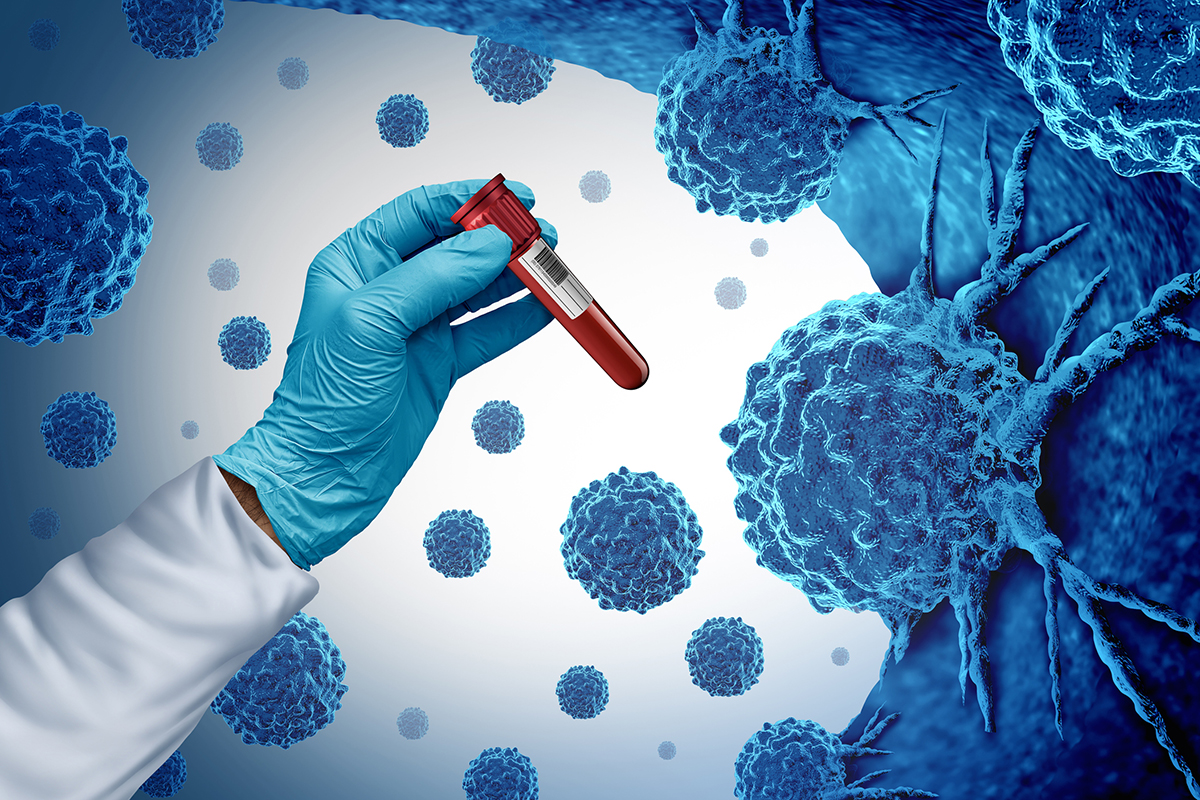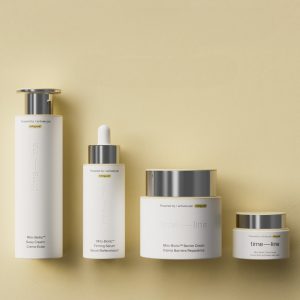These days, you can walk into a doctor’s office and request tests that will highlight your risk for a heart attack or stroke six ways to Sunday. You can look beyond cholesterol to characterize your LDL particle size, get read-outs on lp(a), Apolipoprotein B, hs-CRP, homocysteine, hemoglobin A1c, and more. You might get your coronary or carotid arteries imaged. And, of course, there are stress tests and ultimately even cardiac catheterization.
Wouldn’t it be nice if we could do the same checks for cancer? Starting with simple, accurate, all-inclusive blood tests that could warn you of risk? After all, cancer is the second leading cause of death in the U.S., after cardiovascular disease. One in six of us are destined to die of it.
That’s a topic I recently took up in an episode of my Intelligent Medicinepodcast with board-certified OB/GYN and Functional Medicine physician Dr. Gary Goldberg. Dr. Goldberg is an expert on the revolutionary new Galleri test that promises to revolutionize our approach to early cancer detection.
First, let’s summarize how we screen now:
- Lung cancer: Still the leading cause of cancer death in the U.S., we mostly rely on imaging. That “routine chest x-ray” you used to be subject to during your annual physical? A waste of time and an unnecessary dose of radiation. For current and former smokers, a more precise low-dose CT scan (spiral CT) is recommended. But an analysis reveals that 219 people need to be screened to save just one life. And that came with significant harms of false positives leading to unnecessary biopsies.
- Colorectal cancer: The “gold standard” for screening remains the colonoscopy, but compliance is limited because of its invasiveness. There’s the new Cologuard stool test, but it does a poor job of picking up precancerous polyps, and there are lots of false positives—which still necessitate colonoscopies. Same with the newly-approved colon cancer blood tests can miss some early cancers.
- Breast cancer: Women hate mammograms, but they sometimes do pick up cancer early enough for effective treatment to be undertaken. They’re poor at picking up cancers in women with dense breast tissue, so they’re backed up with ultrasound. And then there’s ultra-precise MRI—which is expensive and uncomfortable and generates a lot of false positives, engendering unnecessary biopsies and apprehension. Advances in machine learning and AI are enabling radiologists to read these imaging studies with greater accuracy—but they don’t eliminate error. A technique called digital breast tomosynthesis (DBT) is enabling better accuracy by enhancing images culled from mammograms—but its critics point out its potential for overdiagnosis.
- Cervical cancer: An undoubted success in cancer prevention, PAP smears, now coupled with HPV tests, help to spot cancers early while they’re still treatable. But the test is inconvenient, and a recent review revealed that compliance with screening guidelines decreased between 2005 and 2019. To obviate the problem, the FDA has now authorized a home PAP collection kit.
- Prostate cancer: The PSA and digital rectal exams are the mainstays of detection, but both fall short. Some men with deadly cancers have normal PSAs; many men with elevated PSAs are cancer-free, and a large tranche of men whose PSA tests trigger aggressive treatment have cancers which wouldn’t have become life-threatening. Not just more accurate—but also more discriminating—tests are needed, and some are being pioneered.
- Other cancers: For many of the major cancer killers, we don’t have reliable early warning tests. For ovarian cancer, the CA-125 blood test was proposed for screening; it misses cancer in half the cases and gives a high percentage of false alarms. Routine screening with pelvic ultrasound has been proposed—but it didn’t pan out and resulted in many unnecessary surgeries. Pancreatic cancer is often only detected when liver function tests go haywire; regardless of treatment it has a high fatality rate.
And that’s the crux of it, according to Dr. Goldberg: Early detection can be decisive, but some cancers remain beyond the reach of current treatments; others, like localized prostate cancer—and even some breast cancers—may not be life-threatening, and the treatment may be worse than the cure, especially in older individuals with limited life expectancies. We need better methods, not merely to diagnose cancers, but to help guide our decisions on how best, or even whether, to treat.
That era is dawning in oncology, especially when it comes to breast cancer, where advanced genetic and molecular markers from biopsies are beginning to help doctors decide how aggressive cancers are, and what treatments are mostly likely to succeed.
Addressing the detection gap comes a novel blood test, the Galleri, from a company that somewhat flamboyantly calls itself “Grail”. The test is good at picking up all cancers and can find them at early stages. But it wouldn’t be much good if it merely announced the presence of cancer without identifying where it is. This Galleri does with some degree of discernment, making the search for a culprit tumor less of a wild goose chase. You could call it a “liquid biopsy”, convenient and non-invasive.
But, as Dr. Goldberg explains, there’s a push-pull with screening tests. As sensitivity increases, specificity decreases. This is best explained by analogy with home security systems. A system that is so sensitive as to alarm when a small draft moves the leaves of a potted plant surely won’t miss any burglars, but it’s going to trigger a lot of false alarms. To increase specificity, if you tune down its threshold for detecting movement so as to ignore the motion of the family cat, the system might lose sensitivity for spotting a particularly stealthy home intruder.
Then there’s a counterintuitive statistical quirk: Even very accurate tests don’t perform well on a population of young, healthy folks. Let’s say an HIV test is 99.9% specific at detecting the AIDS virus. According to Bayes’ Theorem—developed by mathematician Thomas Bayes in 1763—if you were to screen a population involved in unsafe sex with multiple partners, the test would perform quite reliably at identifying true HIV positives. But say you were to have the idea that nuns in a convent—presumably not sexually active—deserved equal treatment with HIV screening. The likelihood of a true positive would be so low that, even with a 1/10 of one per cent chance of failure of the test (no test is 100% accurate) it’s fairly likely that any nun testing positive would be a false positive.
Same thing happens with tests like Galleri—they perform better in high-risk populations: smokers, older individuals, people with family histories of cancer, workers with occupational exposures, those with obesity, high consumers of alcohol, etc. But as a routine screening test for healthy, relatively young people—that may be another story.
And tests that generate a lot of false positives foster spiraling medical costs and unnecessary alarm. That’s why the results of a controversial £150 million trial following thousands of English National Health Service patients are so eagerly anticipated. Will the Galleri test save lives? Or will it promote overdiagnosis and further burden the already strapped NHS?
Another kind of novel cancer test doesn’t diagnose cancer—it predicts it. The MyRisk test by Myriad is an example of this type of profile that healthy patients can obtain as a blood test. We’ve known about BrCA genes for a while—they reveal a propensity to breast cancer. A suite of genes—48 at present—indicate inherited or acquired susceptibility to cancer overall—or to specific cancers.
Dealing with the psychological ramifications of discovering you’re at risk of a dread disease is entirely another issue—these tests may not be for the faint-hearted.
On the other hand, cancer-prone genetics might prove a “teachable moment” to motivate a patient to get regular checkups, follow a healthy diet, engage in exercise, and take cancer-preventive supplements.
A further application of this technology is for follow-up in cancer survivors. After they “ring the bell” following successful treatment, they are left with the unsettling impression that they’re just waiting for the other shoe to drop—the reappearance of cancer on a subsequent scan. But by the time a cancer is visible on imaging, it may be too late to achieve a cure. Interval blood tests can detect tiny fragments of cancer or molecular signatures that an as-yet-invisible cancer is shedding, hastening definitive treatment.
While it may be said that “an ounce of prevention is worth a pound of cure,” it remains to be seen how successfully these advanced tests can be deployed. A lot hinges on our ability to successfully treat cancers, a goal that, while considerable progress is being made, remains elusive.
But the genie is already out of the bottle and these tests are now increasingly available—although most are not yet covered by insurance. They are vying for FDA approval. It’s an important story that I’ll keep an eye on for you.
For a deep dive on this subject, to listen to my extended conversation with Dr. Goldberg.







